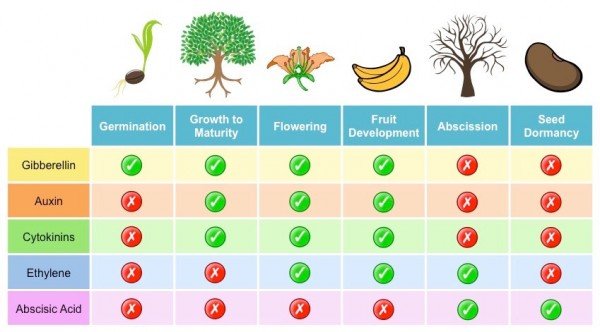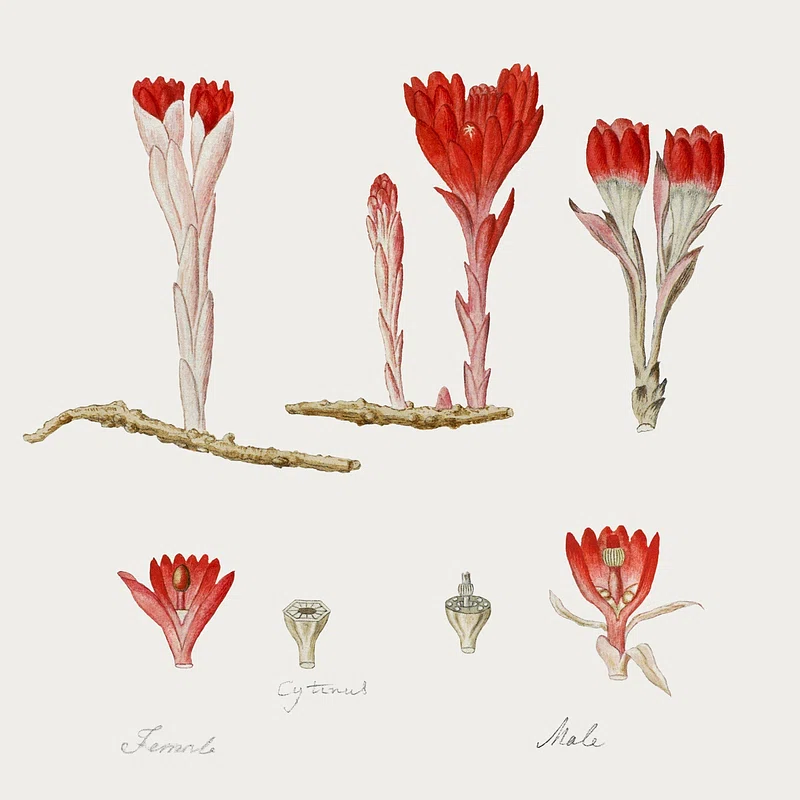In the enchanting world of home gardening, understanding the inner workings of plants is akin to deciphering nature’s secret code. At the heart of this botanical mystery lies a group of natural regulators known as plant hormones, the architects of plant growth.
As we embark on this horticultural journey, we’ll unveil the intricate blueprint that governs plant growth. Plant hormones, the silent orchestrators behind the scenes, play a pivotal role in shaping the health, vigor, and beauty of your garden. Whether you’re an experienced gardener seeking to deepen your knowledge or a novice eager to nurture your green thumb, this blog is your gateway to unlocking the mysteries of plant hormones and their profound influence on gardening success.
Join us as we explore the fascinating world of plant hormones, decode their role in plant growth, and discover how you can harness this knowledge to create lush and thriving gardens. Together, we’ll demystify the science, enrich your gardening skills, and empower you to nurture your home gardening oasis with confidence. Let’s dig in and uncover the secrets that will take your gardening endeavors to new heights.
Table of Contents
Are there hormones in plants?
There are hormones in plants, and these hormones play crucial roles in regulating various aspects of plant growth and development. Plant hormones, also known as phytohormones, are chemical compounds produced by plants in minute quantities. These hormones act as signaling molecules that control and coordinate various physiological processes within the plant.

What are plant hormones also called?
Plant hormones, often referred to as phytohormones, are organic compounds produced by plants to regulate various aspects of their growth, development, and responses to environmental stimuli. So, they are commonly known as phytohormones in the context of plant biology. These hormones act as signaling molecules and play essential roles in coordinating processes such as cell elongation, seed germination, flowering, and responses to environmental stressors.
Types of Plant Hormones
These are the five major plant hormones and their primary functions:
Auxins
Auxins, a class of plant hormones, are pivotal regulators in the intricate world of plant growth and development. These tiny molecules wield significant influence over various physiological processes, including cell elongation, apical dominance, root formation, and fruit development.
One of the key roles of auxins is their involvement in cell elongation, which is vital for plant growth and reaching for sunlight. Auxins encourage the stretching of plant cells, enabling stems and shoots to extend towards sources of light. This phenomenon, known as phototropism, allows plants to optimize their exposure to sunlight for photosynthesis.
Additionally, auxins also play a vital role in apical dominance, a mechanism that dictates the dominance of the main shoot tip over lateral branches. By inhibiting the growth of side shoots and encouraging the main stem’s development, auxins help plants allocate their resources efficiently.
Root formation is another critical function of auxins. These hormones stimulate the formation of roots from plant tissues, allowing plants to establish a strong root system for water and nutrient absorption. This is particularly important during the early stages of a plant’s life.
Furthermore, auxins exhibit their influence in gravitropism, which is the response of plants to gravity. They enable roots to grow downward, anchoring the plant securely in the soil, while shoots grow upwards against the force of gravity.
Gibberellins
Gibberellins, a group of plant hormones, exert a profound impact on plant growth and development, orchestrating several pivotal processes. These bioactive compounds are particularly known for their ability to stimulate stem elongation, seed germination, and flowering in plants.
One of the prominent roles of gibberellins is their promotion of stem elongation. These hormones trigger the rapid expansion of cells in the stem region, resulting in increased height and overall growth. This elongation is especially crucial for tall plants and those seeking to reach sunlight for photosynthesis.
Gibberellins also play a vital role in seed germination. They break seed dormancy and activate the enzymes necessary for the mobilization of stored nutrients within the seed. This process is essential for kickstarting a plant’s growth from a seedling to a mature plant.
Another significant function of gibberellins is their involvement in regulating the transition from vegetative to reproductive growth. They initiate the shift from producing leaves and stems to the development of flowers, which are critical for the plant’s reproductive cycle. This transition is essential for the formation of fruits and the continuation of the plant species.
Additionally, gibberellins are key players in internode elongation, which is the lengthening of the stem segments between leaves or branches. This process contributes to the overall growth and architecture of the plant, allowing it to adapt to environmental conditions.
Cytokinins

Cytokinins, a class of plant hormones, hold a crucial role in governing various aspects of plant growth and development. These bioactive compounds are indispensable for stimulating cell division and differentiation in plants.
One of the primary functions of cytokinins is their promotion of cell division. They drive the proliferation of plant cells, facilitating growth and the formation of new tissues. This process is essential for the overall development and maintenance of the plant.
Cytokinins also play a key role in lateral bud growth. By encouraging the growth of lateral or side buds, these hormones contribute to branching and bushier plant structures. This branching effect is vital for optimizing resource allocation and enhancing the plant’s ability to capture light and nutrients.
Furthermore, cytokinins are known for their ability to delay senescence, or the aging process, in plants. They help prolong the lifespan of leaves and other plant organs, ensuring that they continue to contribute to photosynthesis and overall plant vitality for an extended period.
In addition to their effects on growth and aging, cytokinins stimulate the synthesis of essential biomolecules like proteins and nucleic acids. This biochemical activity is critical for various cellular processes and functions within the plant.
Cytokinins also influence apical dominance, which is the regulation of the main shoot tip’s dominance over lateral branches. By inhibiting apical dominance, cytokinins can encourage lateral bud growth, leading to a more balanced and bushy plant structure.
In summary, cytokinins are vital players in the realm of plant biology, orchestrating cell division, lateral bud growth, senescence delay, and the synthesis of key biomolecules. Their regulatory role in apical dominance further demonstrates their significance in shaping the growth and development of plants.
Abscisic Acid (ABA)
Abscisic Acid, commonly abbreviated as ABA, is a pivotal plant hormone often referred to as the ‘stress hormone’ due to its critical role in managing various stress-related responses in plants. ABA is involved in several key regulatory processes that help plants adapt and survive adverse environmental conditions.
One of the primary functions of ABA is the regulation of stomatal closure during water stress. When plants face water scarcity or drought conditions, ABA levels rise significantly. This hormone then signals the closure of stomata, tiny openings on the leaf surface responsible for gas exchange. Stomatal closure conserves water and reduces transpiration, helping the plant conserve precious moisture during challenging conditions.
Another vital role of ABA is its ability to promote seed dormancy. ABA inhibits the germination of seeds until conditions are favorable for growth, ensuring that seeds do not sprout prematurely and face unfavorable environments. This mechanism is crucial for the successful establishment and survival of plant offspring.
Furthermore, ABA acts as a growth inhibitor. When ABA levels increase, it suppresses growth processes in plants, including cell elongation and division. This growth inhibition is particularly important during times of stress when it’s more beneficial for the plant to conserve energy and resources rather than invest in growth.
In addition to its roles in stomatal regulation, seed dormancy, and growth inhibition, ABA is a key player in plant responses to various environmental stresses, such as drought and high salinity. It acts as a signal molecule, triggering adaptive responses that help plants withstand and endure challenging conditions.
Ethylene
Ethylene, a remarkable gaseous plant hormone, plays a multifaceted role in regulating various aspects of plant growth and development. Known for its distinctive gaseous nature, ethylene exerts significant influence over several critical physiological processes in plants.

One of the most prominent functions of ethylene is its involvement in fruit ripening. Ethylene acts as a signal molecule that triggers the ripening process in climacteric fruits, such as bananas and tomatoes. It stimulates the production of enzymes responsible for the conversion of starches into sugars, leading to the development of desirable fruit characteristics like color, aroma, and flavor.
Ethylene also plays a key role in leaf abscission, which is the natural shedding of leaves from plants. During the autumn season or in response to stress, ethylene promotes the breakdown of cell walls at the base of leaves, facilitating their detachment from the plant. This process allows plants to conserve energy and resources during unfavorable conditions.
Additionally, ethylene is closely associated with senescence, which is the aging and deterioration of plant tissues. As plants age, ethylene levels often increase, accelerating the breakdown of chlorophyll and other cellular components. This contributes to the yellowing and eventual death of leaves and other plant parts.
Beyond these roles, ethylene also influences root growth and development. It can stimulate the formation of adventitious roots, which are roots that develop from non-root tissues, and play a role in responses to stress, such as waterlogging or mechanical damage.
In summary, ethylene is a unique plant hormone due to its gaseous nature, and it is involved in a range of crucial processes. These include fruit ripening, leaf abscission, senescence, and root growth and development. Ethylene’s regulatory functions are vital for plant adaptation and survival in changing environmental conditions.
Ethylene, a remarkable gaseous plant hormone, plays a multifaceted role in regulating various aspects of plant growth and development. Known for its distinctive gaseous nature, ethylene exerts significant influence over several critical physiological processes in plants.
One of the most prominent functions of ethylene is its involvement in fruit ripening. Ethylene acts as a signal molecule that triggers the ripening process in climacteric fruits, such as bananas and tomatoes. It stimulates the production of enzymes responsible for the conversion of starches into sugars, leading to the development of desirable fruit characteristics like color, aroma, and flavor.
Ethylene also plays a key role in leaf abscission, which is the natural shedding of leaves from plants. During the autumn season or in response to stress, ethylene promotes the breakdown of cell walls at the base of leaves, facilitating their detachment from the plant. This process allows plants to conserve energy and resources during unfavorable conditions.
Additionally, ethylene is closely associated with senescence, which is the aging and deterioration of plant tissues. As plants age, ethylene levels often increase, accelerating the breakdown of chlorophyll and other cellular components. This contributes to the yellowing and eventual death of leaves and other plant parts.
Beyond these roles, ethylene also influences root growth and development. It can stimulate the formation of adventitious roots, which are roots that develop from non-root tissues, and play a role in responses to stress, such as waterlogging or mechanical damage.
Plant Hormones in Plant Growth and Development
Plant hormones, often referred to as phytohormones, are essential chemical messengers that orchestrate the growth and development of plants. These hormones work in a coordinated manner, engaging in intricate interactions to regulate various aspects of plant life. One prime example of their collaborative influence is evident in the process of flowering:
Flowering Hormone
Gibberellins and other floral promoters play a pivotal role in guiding plants through the transition from vegetative growth to the flowering stage. These hormones are responsible for initiating the formation of flower buds and meticulously controlling the timing of flowering. The interplay between these hormones is critical in determining when a plant will bloom and produce flowers, a crucial aspect of plant reproduction.
Rooting Soil and Natural Growth Hormones
Auxins, with indole-3-butyric acid (IBA) being a prominent example, are widely employed in horticulture and agriculture for their ability to stimulate root formation in cuttings and aid in the establishment of new plants. These hormones promote the development of adventitious roots, which are essential for the successful propagation of many plant species. Additionally, using natural growth hormones derived from sources like seaweed or other organic materials has gained popularity. These natural growth promoters not only enhance root development but also contribute to overall plant growth, making them valuable tools for gardeners and growers alike.
In summary, plant hormones operate harmoniously, exerting their influence over plant growth and development through intricate interactions. They govern critical processes such as flowering and root formation, contributing to the overall health and vitality of plants. Understanding and harnessing the power of these hormones is fundamental for optimizing plant growth and achieving successful cultivation and propagation.
Use of Plant Hormones for Home Gardening

Understanding the role of plant hormones in the growth and development of crops has practical applications in agriculture and horticulture. By manipulating the levels and actions of these hormones, farmers and horticulturists can optimize plant growth, yield, and overall crop health. Here are two notable examples of how plant hormones can be used for these purposes:
Controlling Plant Height
Gibberellins, a group of plant hormones, can be synthetically applied to influence plant height. This approach is particularly valuable in managing crops with a tendency to grow excessively tall, making them more susceptible to lodging (falling over). By controlling plant height using synthetic gibberellins, growers can produce shorter, sturdier plants that are better equipped to support heavy fruit loads and withstand adverse weather conditions. This practice helps improve crop yield and overall crop quality.
Promoting Fruit Set and Quality
In certain crops, achieving optimal fruit set is crucial for maximizing yield and fruit quality. By applying auxins or cytokinins, plant hormones that promote cell division and growth, horticulturists can enhance fruit set. These hormones encourage the development of more flowers into fruit, increasing the overall crop yield. Additionally, the improved fruit-to-flower ratio often results in larger and higher-quality fruits, which are more desirable for both consumers and growers.
These practices highlight the practical benefits of understanding and manipulating plant hormones in agriculture and horticulture. By harnessing the power of these hormones, growers can fine-tune crop characteristics to meet market demands, improve resilience against environmental challenges, and ultimately enhance the productivity and profitability of their agricultural and horticultural endeavors.
As we’ve journeyed through the science behind plant hormones and their impact on gardening success, you are now armed with a deeper understanding of the forces at play in your garden. These natural regulators, often hidden from view, hold the power to influence everything from root development to flowering and fruiting.
By embracing this newfound knowledge, you have the tools to become a more informed and skilled gardener. Whether you’re nurturing a vibrant flower bed, a lush vegetable patch, or a tranquil green oasis, understanding plant hormones will empower you to optimize plant growth and overall garden health.
So, as you continue your gardening journey, remember that the blueprint of plant growth is within your grasp. Harness the wisdom of plant hormones to cultivate flourishing gardens, and let the beauty of home gardening thrive under your caring touch. Here’s to a future of bountiful harvests, vibrant blooms, and gardening excellence. Happy gardening!







